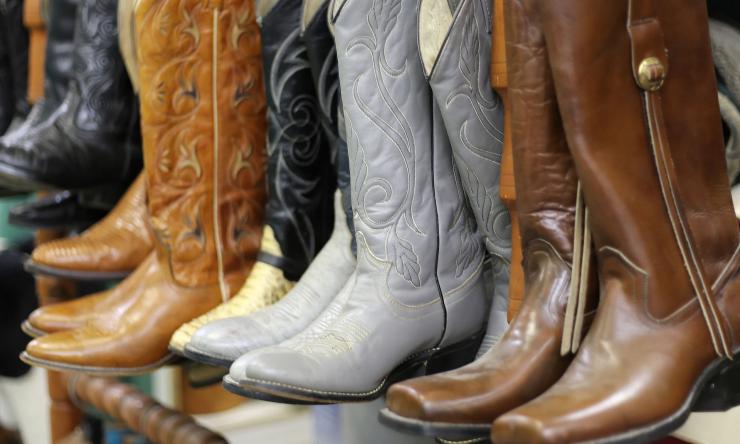Boot scoot into the rodeo with comfort
Before doing the “Boot Scootin’ Boogie” at this year’s Houston Livestock Show and Rodeo, remember that breaking in a pair of new boots takes time and effort. Unworn boots are tight and stiff but taking appropriate precautions during the break-in period can prevent pain and discomfort. A Baylor College of Medicine podiatrist outlines how to properly break in your new boots.
“I recommend wearing two pairs of socks because new boots are tight and the leather is hard, and that can create problems,” said Dr. Esther Jonas, podiatrist and assistant professor in the Joseph Barnhart Department of Orthopedic Surgery at Baylor. “If you take certain steps to soften the boots before you ever put them on and break them in correctly, the chances are you won’t develop blisters and cuts.”
To ensure a smooth break-in, wear two pairs of comfortable athletic socks that come above the ankle. Jonas also suggests wearing the boots frequently to break them in faster. The break-in period lasts 80 to 100 hours. The goal is to loosen the leather fibers to minimize pain and soreness while wearing the boots. To soften the leather, use a moisturizing leather cream or hair dryer on low heat to heat the sides of the boot, which helps loosen the fibers.
“I would also recommend a boot stretcher to expand the width of the toe box or choose a pair with a spacious toe box because that is where most blisters and irritations arise,” she said.
Some people choose to wear over-the-counter shoe inserts with their cowboy boots, a personal preference for added comfort. If you do not experience foot problems, over-the-counter shoe inserts should not cause issues. Patients with foot problems might need custom orthotics, which is to be determined and created by a podiatrist. This entails going through a biomechanics evaluation to determine the type of orthotic the patient needs, followed by making a cast of the foot to fabricate the custom orthotic.
Understanding boot sizing is crucial to prevent aches and pains. New boots should slip a bit in the heel, but if they slip more than an inch, opt for a different size. The boot needs to be snug enough to keep the arch and heel in place, but not constrictive. Try your normal size and give attention to the leather by wearing two pairs of socks and softening it. If you wear them around the house correctly and they still feel tight, consider exchanging them for a half-size larger.
“You don’t want the arch or heel to be sliding side to side – that’s going to be a prescription for a possibility of developing blisters, cuts or bruises. If you develop sore areas or an open wound, stop wearing the boots for a day and apply bandages or an antibiotic ointment cream,” Jonas said.










